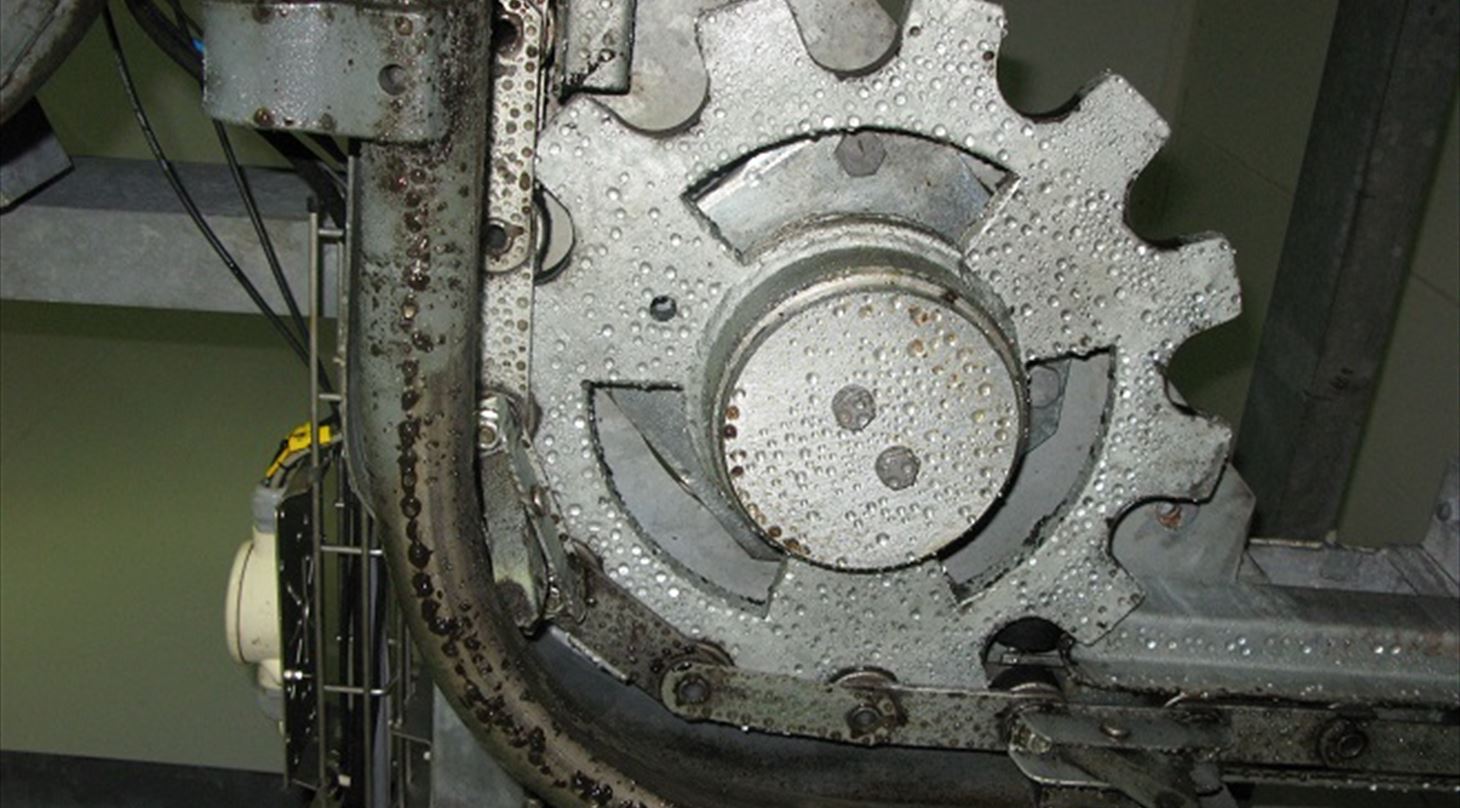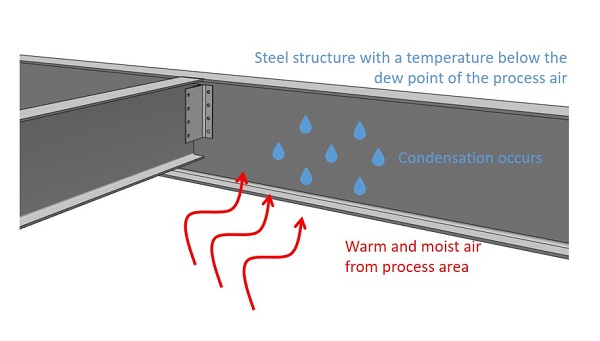
Elimination of condensation
DMRI offer our comprehensive expertise to eliminate or minimize condensation issues. Many meat companies face these problematics – and the origin of these are many. Throughout the years, we have gained extensive experience in how to solve these problematics – and we can assist you in identifying the problematics, find the reasons and provide proposals of how to solve them.
Prevent occurrence of condensation
A part of designing the optimal air handling system is to prevent the occurrence of condensation. In that matter, we have quite extensive knowledge of the issues of condensation in processing facilities. We have conducted several projects rectifying the problems by replacing existing air handling units and/or evaporators with units combining cooling and heating, thus changing the partial pressure of the water vapour in the moist air leaving the air handling unit.
Condensation occurs when
Unsaturated, saturated or supersaturated air interacts with a cold surface. The surface temperature determines the amount of condensation. In slaughterhouses, this can occur during cleaning or during the initial chilling process of hot carcasses. The air is usually supersaturated and warmer than the room's boundary surfaces, hence, it will be depositing a large amount of condensation on the cold surfaces.

The visible condensation quantity, which is seen as droplets, is determined by the surface temperatures, material porosity and volume of the room, as well as emerging from any splashes.
Textile air sock system with benefits
In cases with only minor condensation problems, these may be solved by simply placing or replacing air sock systems with a type of incorporated nozzles in strategic places to allow the problem area to be swept with a steady air flow.
In a recent project in a North American plant, DMRI designed an assisting sock chilling system aiding the existing air handling units in the batch chillers for pig carcasses. This system ensures that the dewpoint temperature of the moist air will be slightly lower than the temperature of the surrounding surfaces. Thus, the moisture in the air will then mainly be deposited in the air handling unit.
Drying air
Air is used to dry out or keep the moisture level low. The air's capacity to absorb moisture depends on the water vapour pressure in the air and the dry-bulb temperature (the temperature measured with a regular thermometer). If the water vapour pressure in the drying air is below the saturation pressure when sweeping and leaving a wet surface, the surface will dry up. This can be accomplished in several ways: by increasing the temperature of the surfaces, by keeping the surface temperature above the dewpoint temperature by forced ventilation with heated air, or by supplying air with a lower water vapour pressure during the drying period.
Uniquely designed solutions
From an economic point of view, DMRI will design your air handling system to avoid critical condensation issues, by combining the possible and relevant drying techniques. The design is usually unique from one slaughterhouse to another and includes analyses of the moisture load, procedures, schedules, the configuration of the current air system and possible options for the use of heated ambient air and forced ventilation.